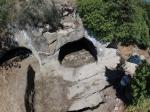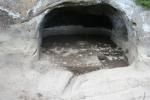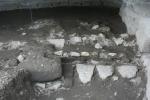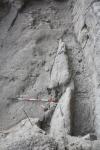Summary (English)
This was the 42nd excavation campaign on the Final Bronze Age settlement of Nova (Farnese, VT). The research is undertaken by the Centre for the Study of Prehistory and Archaeology ONLUS Milan in collaboration with the Superintendency for Roma, Viterbo and South Etruria.
Excavations took place in two sectors: Vb where work had already begun and a new area XIII.
Sector Vb, situated at the base of the south side of the cliff, was reopened in 2007 in order to renew the investigation of a “ditch” house, c. 4 m wide, 2 m deep and at present over 50 m long that was only partially excavated in the 1980s. Work concentrated on the eastern end of the sector, on the presumed continuation of the structure (sector Vb, east area). The walls situated on the uphill side and traces of the cut on the downhill side were found.This season, excavation continued inside the structure. The removal of several layers of collapse revealed two interesting elements inside the “ditch” structure. There was a beaten surface occupying almost the entire structure and a sort of large rock cut channel, which at present is difficult to interpret, but datable to a proto-historic period (fig. 1).
The pottery confirmed the proto-historic chronology of the fills. At its lowest point, the beaten floor surface was situated at a depth of 99cm below the datum base level. Considering that the sunken base of the hut excavated in the 80s was situated at -1.5-2m, it may be suggested that the beaten floor belonged to a later occupation phase of the “ditch”, but still within the Final Bronze Age. Among the most interesting finds was a small fragmentary bronze fibula, found in an abandonment layer (fig. 2).Sector XIII was opened in the easternmost area of the southern side of the cliff. Identified in 2015, it consisted of a rather narrow but long terrace onto which three caves open. The caves contained clear evidence of proto-historic working and medieval modifications. In 2015, work began in the easternmost cave.
This season, exploration continued inside this cave (n. 51) and the part of the terrace in front of it (fig. 3 and 4).
There were two niches inside the cave: the larger one dates to a proto-historic period, and was cut by two small channels and a posthole. There was another niche outside the cave in the east wall, also datable to a proto-historic period. It contained traces of burning and was possibly an oven.The excavations identified an abandonment layer and two occupation layers attributable to the medieval period (fig. 5). Four postholes were dug at the centre of the cave in the latest abandonment layer. There was evidence for another temporary structure in the north-eastern corner of the cave: a cut and a fill of stones and earth for supporting timber posts housed in six holes in the northern rock face.
Excavation of the area in front of the cave revealed the absence of a terraced surface: in fact, the section of bedrock now visible revealed the presence of a sloping “road” in which three small channels were cut in a proto-historic period.
- Nuccia Negroni Catacchio - già Università degli studi di Milano, Politecnico di Milano, Centro Studi di Preistoria e Archeologia, Milano
Director
Team
- Massimo Cardosa - Accademia di Belle Arti di Brera e Centro Studi di Preistoria e Archeologia
- Veronica Gallo- Centro Studi di Preistoria e Archeologia
- Christian Metta - Centro Studi Preistoria e Archeologia
- Giulia Pasquini - Centro Studi Preistoria e Archeologia
- Marco Romeo Pitone - Centro Studi di Preistoria e Archeologia
Research Body
- Centro Studi di Preistoria e Archeologia, Milano onlus
Funding Body
- Fondazione Carivit Viterbo





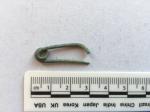
![Download [PDF]](/excavation/skins/fasti/images/results/download_sml.png)
